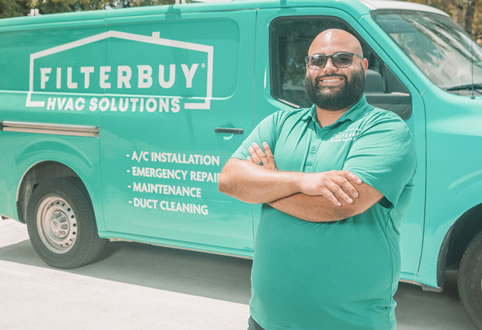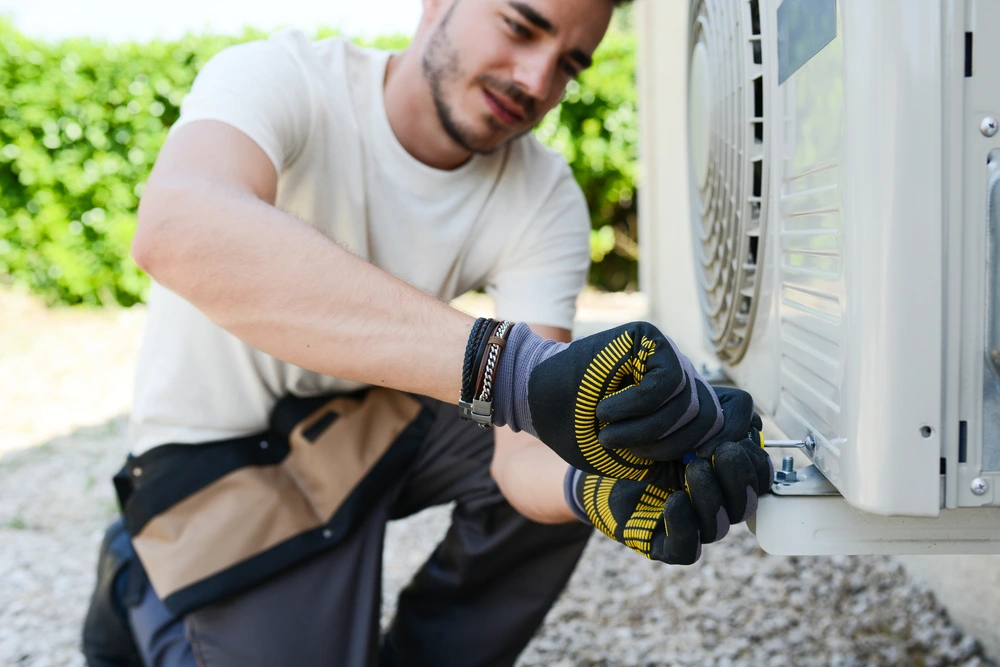Your heating and cooling equipment is a big investment, and a yearly tune‑up is the easiest way to keep it running safely and cheaply. But that service is only as good as the person who performs it. Below you’ll find a deeper look at the traits that separate a truly professional tune‑up specialist from someone who only changes a filter and moves on. Use these points as a checklist the next time you invite an HVAC technician into your home.
Key Takeaways
- Expertise: Look for a tech who understands every HVAC component and how they interact.
- Diagnostics: Demand data‑driven troubleshooting, not trial‑and‑error parts swapping.
- Service: Professional manners, clear explanations, and tidy work show respect for your home.
- Training: Current licenses and continuing education prove the tech is up to date.
- Tools and Savings: Modern instruments and efficiency advice translate into lower bills.
1. Broad, Practical System Knowledge
A top technician understands how every part of an HVAC system—including furnace burners, heat‑pump reversing valves, refrigerant metering devices, blower motors, and ductwork—affects overall comfort and efficiency. That knowledge shows up the moment the service call starts. The tech:
- Begins with questions about cold or hot rooms, high bills, or allergy concerns.
- Moves through a logical inspection sequence—from thermostat to air handler to outdoor unit—so nothing gets missed.
- Explains findings in plain English: “Your static pressure is high because the return duct is undersized” rather than rattling off jargon.
Experience counts here. Someone who has serviced hundreds of gas furnaces, heat pumps, and mini split systems can quickly recognize a blower wheel caked with dust, a coil starting to ice, or a combustion draft problem—and correct it before a small fault becomes an emergency breakdown.
2. Clear, Methodical Problem Solving
When a reading falls outside normal range, great techs rely on measurements, not guesswork. They attach digital gauges, clamp thermistor probes, or pull a combustion analyzer to confirm exactly why performance is slipping. Their process often sounds like this:
- “Your temperature rise is above spec, so I checked filter, blower speed, and coil cleanliness.”
- “Voltage is present at the contactor, so the next step is testing the capacitor and compressor windings.”
By basing every decision on data, they fix the root cause instead of swapping parts until the system happens to restart.
3. Customer Service That Feels Personal
A tune‑up takes only 60–90 minutes, but a technician’s attitude can color your impression for years. Pros who value service:
- Show up within the agreed time window and call or text if traffic delays them.
- Use shoe covers, drop cloths, and a shop vacuum to keep your floors clean.
- Offer simple tips—such as “change this MERV 11 filter every two months, not six”—so you can protect the system between visits.
- Leave a written report with all readings and any repair options but never pressure you into instant decisions.
Satisfied customers remember that respect and often insist on the same company for future work.
4. Ongoing Training and Valid Credentials
HVAC technology changes fast. Newer systems feature variable‑speed compressors, communicating controls, and eco‑friendly refrigerants such as R‑454B. The best technicians stay current through manufacturer schools, NATE recertification, and state‑approved continuing education. Their truck contains:
- A visible state license number you can verify online.
- An EPA Section 608 card for safe refrigerant handling.
- Updated certificates for heat‑pump, gas‑furnace, and minisplit service classes.
Because they know today’s code requirements, they can also pull and close permits without headaches.
5. Modern Tools and an Eye on Efficiency
Digital instruments reduce human error and let techs prove the results. Look for pros who:
- Use Bluetooth‑enabled gauges that log suction and liquid pressures and instantly calculate superheat and subcooling.
- Measure total external static pressure to spot hidden duct blockages.
- Offer smart thermostat setup, airflow balancing, or duct‑sealing guidance to lower long‑term utility costs.
Great specialists see the tune‑up as an energy‑saving opportunity, not just a cleaning task. If a blower wheel is dirty, they explain how that extra resistance can add dollars to every bill—and then show you the freshly cleaned part before reinstalling it.
Putting It All Together: Why Homeowners Choose Filterbuy HVAC Solutions
Filterbuy sends only state‑licensed, background‑checked technicians who complete manufacturer training every year. During a tune‑up they
- Run a 24‑point digital inspection that checks refrigerant pressure, temperature split, burner and blower performance, static pressure, and every safety switch;
- Leave a clear summary (printed or e‑mailed) so you can see the exact readings before and after service;
- Show photos of any worn or damaged parts if a repair is recommended, so you know why it matters;
- Tidy the work area and, if you use Filterbuy replacement filters, schedule the next MERV 8, 11, or 13 shipment so the system stays clean.
All work carries a one‑year labor warranty and 24/7 phone support. If something we serviced fails inside that window, we return at no charge.
Choose a specialist who meets all five standards, and your annual tune‑up becomes a genuine investment in comfort, safety, and reduced energy costs.
Filterbuy HVAC Solutions checks every box and stands ready to keep your system running at its best.
Frequently Asked Questions
How much does a commercial HVAC tune‑up cost?
Most businesses pay $100 to $500 per visit, depending on system size and location. Extra repairs or parts will raise the bill.
What does a standard tune‑up include?
A tech inspects electrical connections, refrigerant charge, burners, heat exchangers, blower wheels, coils, and safety devices; cleans coils and drain lines; lubricates moving parts; and tests overall efficiency.
Is a tune‑up really worth it?
Yes. A yearly visit can catch small problems before they become expensive breakdowns, cut energy waste, and help equipment last 15 to 20 years instead of failing early.
What part of an HVAC unit costs the most to replace?
The compressor on an AC/heat‑pump or the heat exchanger in a furnace—both can run $1,500 to $3,000 installed.
How long does a residential tune‑up take?
About 60–90 minutes when the equipment is easy to access; longer if the unit is in a tight attic or crawlspace.
What does a pre‑season tune‑up cost for homeowners?
Typically $100 to $300. Many contractors offer spring‑and‑fall specials to fill their schedules in mild weather.
Do I need to clean ducts before Aeroseal?
Yes. Removing dust and debris first helps the sealant bond to metal instead of dirt, giving a longer‑lasting result.
Do you tip HVAC technicians?
Tipping isn’t expected, but a small gratuity or a positive online review is always appreciated for exceptional service.
How often should a commercial system be serviced?
Twice a year—once before peak cooling season and once before peak heating season—to keep downtime and energy costs low.
Can I handle some tune‑up tasks myself?
You can change filters, clear leaves from the outdoor coil, and keep floor vents unblocked. Leave electrical tests, refrigerant work, and combustion checks to a licensed pro.







